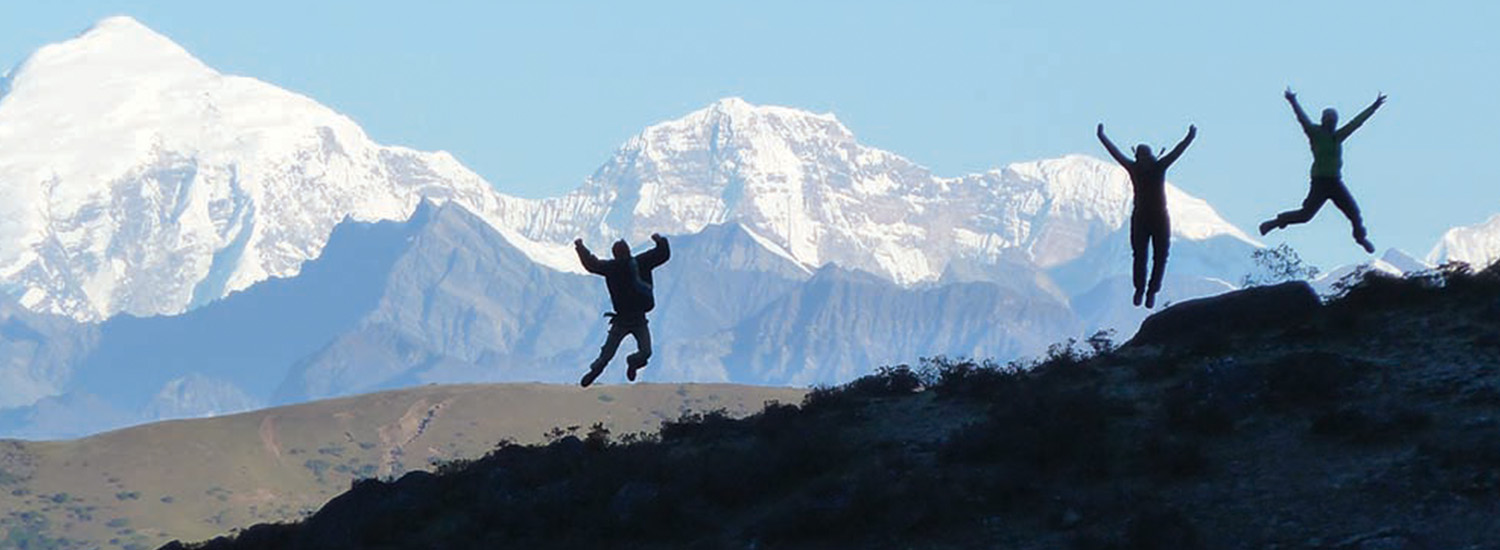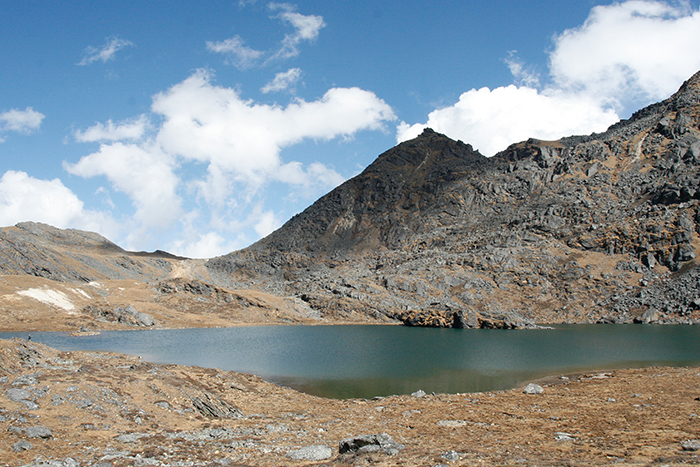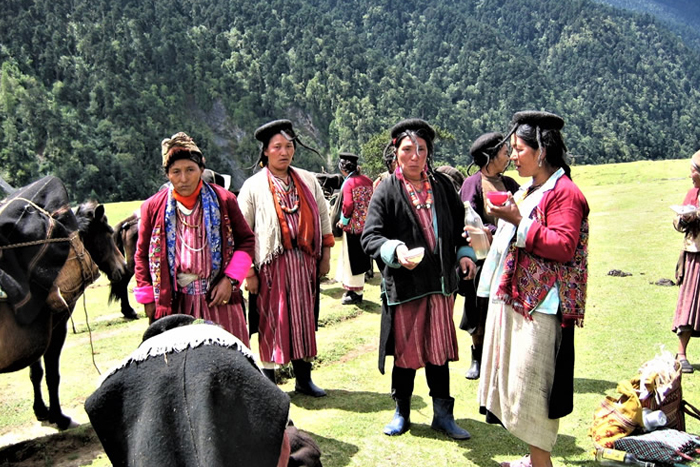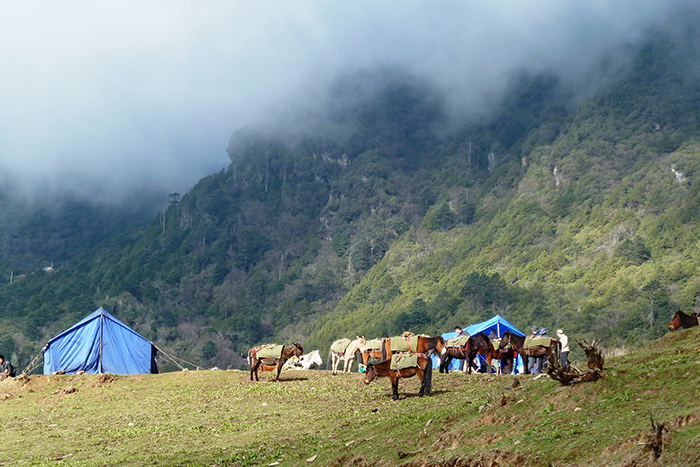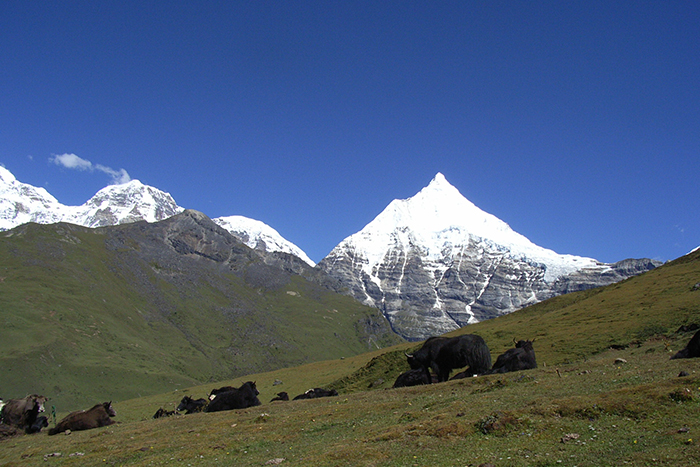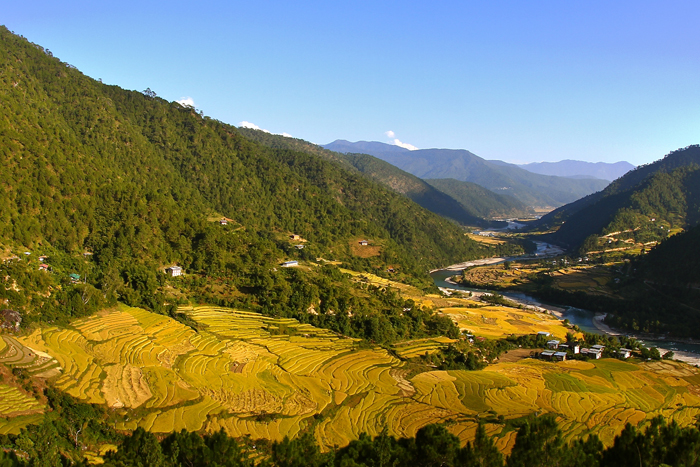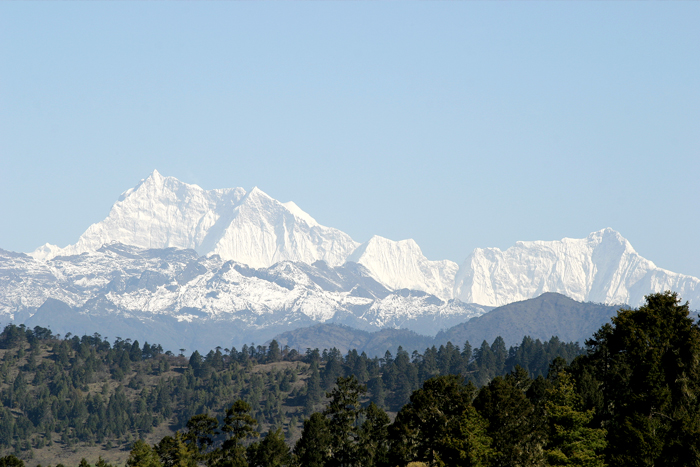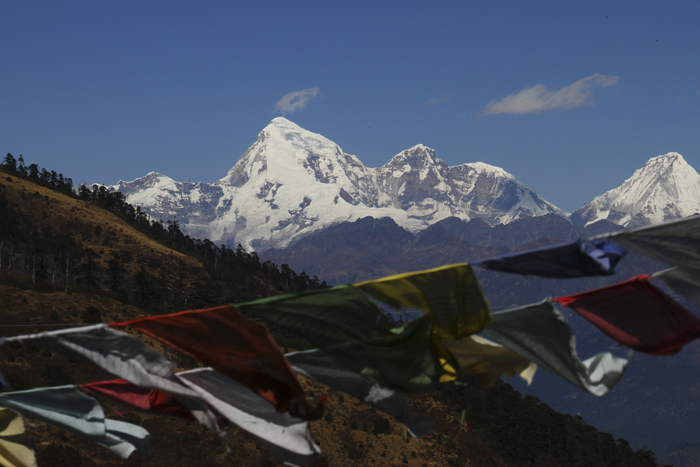Dagala Trek





Tour Summary
This is a tailor-made trek for lovers of nature and beauty as it takes you to places second only to descriptions of heaven. You will be stunned by glimpses of high altitude mountain lakes and the entire Himalayan range in Bhutan. Together with the trek, you also get to visit places of historic and cultural significances, such as Paro Taktshang (Tiger’s Lair), Bhutan’s National Museum, Tashichhodzong (which houses the King’s office), the world’s largest Buddha Statue and Punakha Dzong (Fortress), which from far looks like a giant ship on a mass of water.
Max. elevation: 4,520m
Highest Camp: 4,300m
Standard: Medium
Best Seasons: April to June and September to November
Start: Gynekha, Thimphu
Finish: Chamgang, Thimpu
Day 01: Bangkok/Delhi/Katmandu – Paro
The flight to Paro will be an exhilarating one, as the route traverses parallel to the mighty Himalayas enabling passengers to see the world’s highest peak, Mt Everest, and many more. The descent affords a panoramic view of Bhutan’s foothills culminating into a thrilling landing at what is considered one of the world’s most challenging airports.
At the airport, you will meet your guide who will escort you to the hotel for lunch. After lunch, you visit Paro valley famed for its historical monuments, agricultural farms and quintessentially Bhutanese village communities. You will be visiting the National Museum, formerly a watch tower, and then the “Castle on a Heap of Precious Jewels” or Rinpung Dzong.
Visit Paro town later in the evening.
Overnight at the hotel.
Day 02: Visit Taktshang (Tiger’s Lair) and Drugyel Dzong (Castle of the Victorious Drukpas)
After breakfast and half an hour drive, you will hike to Taktshang, a five hour round trip, following an ancient but oft-trodden footpath along water-driven prayer wheels.
Perched on a hair-raising ravine about 1,000metres above the valley floor, Taktshang is renowned in the Himalayan Buddhist world as one of the most popular sites of pilgrimage. Associated with the eight century tantric Saint Padmasambhava, it was within a cave in the temple that he subdued evil forces obstructing the teachings of the Buddha. It is said that he came riding on a tigress in a wrathful form.
After Taktshang, you will visit the ruins of Drugyel Dzong, the fortress known as the “Castle of the Victorious Drukpa”, which is a symbol of Bhutan’s victory over the Tibetan invasions in the 17th and 18th centuries. On a clear day you can get a view of Mt Jomolhari.
Enroute to the hotel, we will visit the 7th century Kyichu Temple which is believed to have been built on a place that resembled the left knee of a giant ogress.
Day 03: Paro - Gynekha – Gur
Distance seven km, five hours; 550m ascent, 210m descent; camp altitude 3,290m;
Trek begins from Gyenkha, an hour drive from the hotel, starting with a short descent to the river and then an up-hill climb to a huge rock platform from where we can enjoy a picturesque view of the valley below. After another two hours we will reach our camp site at Gur. We will come across some yak pastures near our main trail.
Day 04: Gur – Labatama
Distance 12km, six hours; 1,220m ascent, 110m descent; camp altitude 4,300m
We will be trekking through ridges and beautiful, rugged mountain vegetation carpeted with wild alpine flowers. There will also be refreshing meadows. As soon as we cross the first pass, we will be greeted with a breath-taking view of the world’s third highest mountain, Kanjenjunga, and nearly all the Himalayan peaks in the Bhutanese territory. A short distance from the pass takes us to the Dagala range, interwoven with meadows and huts of yak herders. We will finally descend to our camp site nearby a tranquil lake called Uthso Tsho.
Day 05: Labatama halt
Enjoy and relish the beauty of the landscape and nature. You can undertake an excursion to any of three surrounding lakes - Reli Tsho, Hen Tsho and Jama Tsho and even try trout fishing.
Day 06: Labatama – Panka
Distance 8km, six to seven hours; 260m ascent, 520m descent; camp altitude 4,000m.
The trek starts with a little ascend taking the trail along the western side of Dala Lake up to a mountain saddle at 4,520m. From here you can ponder and marvel at the beauty and might of nature, as you see an awe-inspiring parade of the Himalayan peaks, truly majestic and pristine, led by Everest and others like Kanchenjunga, Jomolhari, Jichu Drake, Tshering Gang, Khangbum, Masang Gang, Tsende Gang and Gangche Ta in tow.
You then descend to Doccha Chhu (river), follow its course for a while and reach Panka. This trail consists of short but intermittent climbs and descents.
Day 07: Panka-Talakha
Distance eight km, five to six hours; 180m ascent, 110m descent; camp altitude 3,080m
A wonderful day, where you cross several mountain passes but without any major ascent involved. Along the trail, you can keep your eyes open for various species of Blue Poppy (June-July) and sightings of rare high altitude birds. Before you descent to Talakha monastery, you will cross the last pass, Tale La, located at 4,180 meters.
The night’s camp will be near the monastery. You will be woken up early morning by the chants of the monks and chimes of ritual bells. You could savor one last great panoramic view of Bhutan’s capital, Thimphu.
Day 08: Talakha – Chamgang - Thimhpu
Distance six km, three hours; 440m descent
A short walk will take you to a feeder road and to Chamgang village. You will then be driven to your hotel in Thimphu. You can relax for the rest of the day.
Day 09: Thimphu sightseeing
Bhutan’s capital and the Kingdom’s largest city have a lot to offer. You can begin with a drive to Buddha Point, which has the world’s largest statue of the Future Buddha, Maitreya. From there, you can have a 360 degree close-quarter view of Thimphu and the adjoining areas. The 12th century Changangkha Temple, Takin Zoo and the viewpoint at Sangaygang will be your next destinations. There will also be visits to a nunnery, the Folk Heritage Museum and the Textile Museum. Your last visit before lunch will be the Gross National Happiness (GNH) centre.
After lunch, we will proceed to Tashichho Dzong, a 17th century castle-fortress which today houses the offices of the King, Chief Abbot and government ministries. It is the centre of Bhutanese polity. We will also take the opportunity to see the nearby parliament complex. We will spend the rest of the day watching an archery match and strolling around town.
Day 10: Thimphu – Punakha/Wangduephodrang
Taking one about three to four-hours, the drive from Thimphu will take you through a constantly changing kaleidoscope of vegetation, waterfalls, flowers, mountains and meadows. The highlight of the drive is Dochula Pass (3,100m), about 45 minutes from Thimphu, from where on a clear day we can see the entire eastern Himalayan range, teeming with 6000m to 7554m snow-capped mountains. The pass also known for its abundant species of extremely beautiful flowers has 108 Buddhist stupas exquisitely built around a mound, adding to the natural splendor of the place.
As you cross the pass, you will gradually descend to the sub-tropical valley of Punakha, which was ancient Bhutan’s capital. Punakha Dzong (Fortress), which represents the best specimen of Bhutanese architecture, stands girded by two rivers (Male and Female) and from far looks like a giant ship on a body of water. It is the treasure house of the Kingdom, containing the country’s main treasures in the form of Buddhist relics.
We will lunch with a rural farming household in a nearby village and proceed to visit the Temple of Fertility – Chimi Lhakhang, built in the 15th century to honour the “Divine Madman”, Lam Drukpa Kuenley, a saint iconoclast who is also associated with phallus worship. The Temple attracts barren couples from all over the world to receive the blessings from a phallus.
Overnight at hotel in Punakha.
Day 11: Punakha/ Wangdue – Paro
We will visit the ruins and reconstruction work underway at Wanduephodrang, a fortress which was built in 1638 but was tragically gutted by a fire in 2012. After a short stroll in Wangdue town, we will drive 125 kilometers (four hours) back to Paro where we will visit some other significant historical places. A brief farewell ceremony will be held during dinner in the hotel.
Day 12: Paro – Delhi/Bangkok/ Kathmandu
After breakfast, you will be driven to Paro International Airport for departure to your next destination.
|
GROUP SIZE: Any group Size |
TRIP SEASONS: April, May,June, Sept, Oct and Nov |
INCLUDED
-Bhutan Royalties, tourists fees, Visa fees and taxes.
-Accommodations in listed or similar hotels (pleasant hotels 3-4 star type) during the tour and in tents during the trek.
-All meals, including evening tea/coffee etc through-out the trip.
-All land transfers, sightseeing with entrance fees.
-Experienced Trekking Tour Guide.
-Bottled water in the vehicle and other camp servces during the trek:
-Fully-serviced camping trek
-Provided during the trek: tents (sleeping, dining Kitchen and toilet tents), trekking mattresses, small air pillow, Hot-water bag, Pressured Altitude Bag for altitude emergencies, Pony to carry luggages, Basic Medical Kit.Cook and assistants accompany the group. All meals, beverages and snacks are provided.
NOT INCLUDED
-Flights in and out of Bhutan.
-Personal trekking gears such as clothing, shoes etc.
-Travel insurance, Drink, Visa fees, Laundry
Related Tour
-
Merak-Sakteng Trek
A trekking route that has been newly...
-
Druk Path
For lovers of light trekking and nature...
-
Jomolhari Trek
Equivalent to any trek in the Himalayas,...
-
Laya Gasa Trek
The first part of the Laya Gasa...
-
Punakha Winter Trek
Tailor-made those who love moderate and easy...
-
Snowman trek
This is Bhutan’s toughest trek and well...
-
Chelila Natural Trek
This is a trek that will capture...

